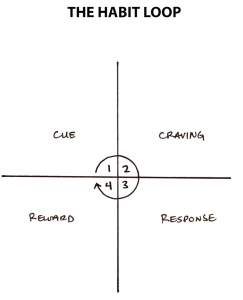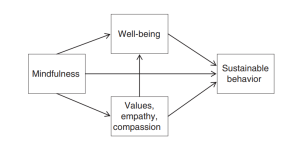The Cabin we live in has a porch on the outside. Often, at the end of a long week, all I want to do is go and sit on the porch. I might read, listen to music or (my personal favorite) talk with some of my cabin-mates. It’s wonderful – being able to sit and do nothing, having the earned privilege of laziness after working tirelessly through the week.
When living in South Housing, I didn’t get this opportunity. I remember waking up on a weekend and wishing for nothing more than a chance to just sit and do nothing, but the only option was an inhospitable “backrooms” corridor down the hall that didn’t even have a window, much less access to the open air and a gorgeous view. I would just go to breakfast, but to do that I had to shower, and if I showered I might as well start on my day, get my homework done, or if not, I would go drive to town to spend my time with friends getting food somewhere. Without an opportunity to expend my time uselessly, I fell into the endless cycle of productivity followed by high-energy leisure.
This isn’t a “me problem.” This is a socio-economic problem.
Since 1950, global resource use has increased steadily and exponentially (Steffan et al. 2015). The global economic system has pushed itself to an existential extreme, tearing apart the intricate systems that keep our world functioning. This dramatic increase is not strictly necessary for our survival – it is only the most wealthy that are responsible for the majority of our ecological overshoot (Wiedemann et al. 2020). From this it follows that we can feasibly reduce production, redirect existing production towards equitable distribution, and thus increase equality while reducing our global ecological footprint. One of the most popular means by which we can reduce material throughput is something that typical economists would scoff at – work-time reduction and increased leisure. If we work less, we can use less materials for production given the surplus is distributed equitably.
BUT, it is crucially important that our leisure time is spent doing non-materially-intensive things, and Ryan Gunderson says “there are perhaps no more ‘environmentally friendly behaviors’ […] than idling or doing nothing” (Gunderson 2018). This is where the porch comes in. Common spaces, access to the outdoors, and proximity to others create perfect conditions for social idleness and enjoyable laziness. But why, even when provided these spaces and opportunities, do we still choose to work? On a personal level and on a societal level, why would we rather pursue something that is so destructive?
Georges Batailles, a 20th century philosopher, would argue that this is an economic and existential problem. Our continuous pursuit of growth, he argues, exemplifies the struggle for survival. Even though we have accumulated well more than enough to establish our survival, social and economic atomization reduces the amount of excess that we can use as individuals, whereas the immeasurable excess that society produces collectively could allow us all to live comfortably and joyously. Bataille argues that part of the reason why we choose to focus on survival (or growth), and avoid expenditure is that survival as a goal is provided to us when we are born – it’s easy to fall back on. Expenditure, on the other hand, forces us to confront the existential freedom that we are all faced with and say: “What are we going to make of ourselves in this terrifyingly free world?” (Romano 2014)
So what do we do? Having a porch in a collective living space can help us to firmly, collectively choose – against economic, social, and existential factors – that we have a right to be lazy, and we are going to take advantage of it.
Works Cited:
Gunderson, R. (2018). Degrowth and other quiescent futures: Pioneering proponents of an idler society. Journal of Cleaner Production, 198, 1574-1582.
Romano, O. (2014). Dépense. In D’Alisa, G., Demaria, F., & Kallis, G. (Eds.). Degrowth: a vocabulary for a new era. Routledge.
Steffen, W., Broadgate, W., Deutsch, L., Gaffney, O., & Ludwig, C. (2015). The trajectory of the Anthropocene: the great acceleration. The Anthropocene Review, 2(1), 81-98.
Wiedmann, T., Lenzen, M., Keyßer, L. T., & Steinberger, J. K. (2020). Scientists’ warning on affluence. Nature communications, 11(1), 3107.

